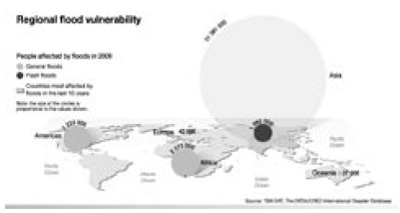Prime
Environment report warns of fast melting glaciers north and south
By Bao Daozu (China Daily)
Updated: 2010-12-08 11:22
 |
Large Medium Small |
CANCUN, Mexico - Patagonia, the southernmost part of South America, and the coastal mountain ranges of Alaska are losing their huge glaciers faster and for longer than those in other parts of the world, the United Nations Environment Programme (UNEP) said on Tuesday.
The findings, compiled by the UNEP with scientists and research centers from around the world, also show glaciers are retreating in northwestern United States, southwestern Canada, in the mountains of Asia, including the Hindu Kush of the Himalayas, the Arctic and the Andes.
In Europe, glaciers had been getting larger since the mid-1970s, but this was reversed around 2000.
Scientists also discovered that some glaciers in western Norway, New Zealand's South Island and parts of the Tierra del Fuego in South America have been expanding.
The report highlights that glaciers in China's Tianshan Mountain range and the Himalayas are receding. However, in smaller areas of the Karakoram range in Asia, advancing glaciers have begun to cover areas that have been ice-free for at least 50 years.
"Accumulation of science shows us a clear general trend of melting glaciers linked to a warming climate and perhaps other impacts, such as the deposit of soot, reducing the reflection of heat back into space," said Achim Steiner, UN under-secretary-general and UNEP executive director.
"This report underlines a global trend, observed over many decades now in some parts of the globe, which has short- and long-term implications for considerable numbers of people in terms of water supplies and vulnerability."
The scientists believe that steady temperature rises have caused glaciers to melt or advance, which often result in natural disasters in mountainous regions. Advancing glaciers block drainage routes and create unstable lakes, which may cause severe flooding in downstream areas.
"The risk to lives and livelihoods in the fragile Hindu Kush Himalayan region is high and getting higher," said Madhav Karki, deputy director-general of the International Center for Integrated Mountain Development.
The UNEP report, high mountain glaciers and climate change, also indicates that melting glaciers may lead to the reduction in water availability in some dry areas, including parts of Central Asia and the Andes, "perhaps in a matter of a few decades".
The report said many low-lying dry areas that rely on small glaciers as main water sources will face water shortages as these tend to melt faster.
Christian Nellemann of the UNEP/GRID-Arendal research center in Norway, said when glaciers disappear, people, livestock, birds and animals will be forced to move. But ironically, he said, many people will die in deserts from drowning "when increasingly unpredictable rains cause flash floods".
Most glaciers started shrinking at the end of the Little Ice Age about 150 years ago. However, since the start of the 1980s the rate of ice loss has increased in many areas, concurrent with increases in global mean air temperatures.
In the past 40 years, glacial lake outburst floods have been increasing, not only in China, Nepal and Bhutan, but also more recently in Patagonia and the Andes.
China Daily
